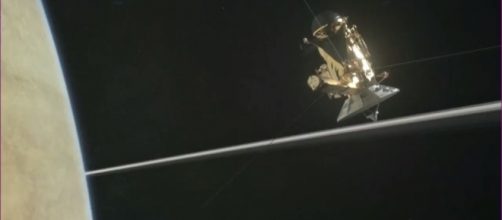These days, when one is discussing space missions beyond the immediate vicinity of Earth and the moon, the most-frequently brought up topic is the many plans to go to Mars. This is because of Elon Musk of SpaceX who envisions a Martian colony in the future. But the sights of astronomers have been looking further away than that for many decades now, in the form of space probes. In 1997 NASA launched the Cassini Huygens Probe to get a close-up look at the planet Saturn. During the 20 years it spent in space, the probe transmitted back breathtaking images of the famous ringed gas planet in our solar system, lately in April this year.
But now time is up.
Death dive
Following its final maneuvering orders from NASA mission control that sent it on a high-speed ring-around of Saturn, the Cassini Huygens probe was put on the end stretch of its flight plan – and mission life – by NASA early this week. On Monday, September 11, Cassini made its final flyby of the planet’s most prominent moon, Titan, which then set it on a straight path down towards the gassy body of Saturn itself.
This is its final one-way trip. Come Friday, September 15, Cassini will plunge into the edge of the planet’s atmosphere where insanely high-speed winds will destroy it once and for all. The pieces will then be melted by the extreme temperatures of Saturn until they evaporate and become part of the very atmosphere that tore it apart.
All the while, until the moment of its death, Cassini will transmit all the data it can to NASA about the gas giant’s atmosphere, right down to the last second.
Necessary disposal
This dramatic suicide dive by the Cassini Huygens probe into Saturn is standard disposal procedure for all planetary exploration space probes from NASA.
As the propellant gases used by Cassini to move about are depleted, they could not risk it becoming drifting debris orbiting Saturn. They, therefore, maneuvered the probe to perform its merry-go-round flight through the planet’s rings since its momentum and Saturn’s gravity would keep Cassini moving despite nearly running out of propellant.
It yielded some of the most detailed photos of the iconic rings and the planet’s North Pole ever seen.
As Cassini hurtles on towards its death, the program head at NASA - Curt Niebur - is philosophical about the probe’s final fate. "The Cassini mission has taught us so very much,” he said. “And to me personally I find great comfort from the fact that Cassini will continue teaching us right up to the very last seconds."


